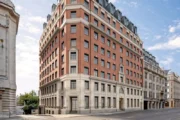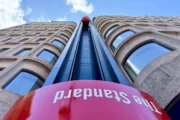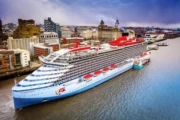-
I have had trips to Chile planned, but cancelled due to Covid. Now I am considering a 3-week tour in February 2024. Probably into Buenos Aires, and return from Santiago (or vice versa). Probably Club on BA.
How would you spend 3 weeks?
My thoughts are both capitals, Atacama, Wine areas, Lake District / Bariloche – but I would welcome advice, particularly from people who have been there.
I accept that we will need to take some internal flights, but I do not want to do too many of them.
– Vineyards near Santiago or near Mendoza?
– Lake District, or Patagonia, or both?
– Any coastal resorts, or “not special enough”?
– Feb / March, or November?
Thanks!Feb or March is fine (we were there in those months this year and will be again next year), but bear in mind that given the size of the countries, the weather is very location dependent – ie Argentina tropical in the north east, desert north west and both have glaciers in the south. For wine country I would choose Cafayate, even Colomé (harder to get to but a stunning journey there via Salta and a different world) over either Chile or Mendoza which is now super commercialised Disney wine land but a better setting than most Chilean ones. There are no coastal resorts worth visiting and the sea is very cold but the Valdes Peninsula is great for wildlife but not sure of seasonality.
Atacama is good, and Bariloche is an absolute must – stay at or as near Llao Llao as you can, not the town. You are wise not to try and take too many flights! Obviously they are necessary given the vast distances and not great roads, but big delays and unexpected weather are not at all unusual, so trying to cram in too much may detract from what will otherwise be a great trip. In Buenos Aires, Aeroparque, the downtown airport, is massively more convenient than Ezeiza.
In addition to the above I would include the Torres del Paine national park and the Perito Moreno glacier.
You might be planning to do it all yourself, which is great. If you need any in country help I have used Trips South America and found them pretty good.
I would agree with the previous post. We have spent 7 weeks across both Chile and Argentina in 2 different trips.
The absolutely must see in Chile is Torres del Paine National park. If you have moderate to good fitness then Base of Towers trek is best hike I think I have ever done. Highly recommended.
I would skip Bariloche and Argentinian Lake District. It was our least favourite place we went. Others may disagree, but for us we felt it didn’t live up to expectations.
Much better was Argentinan Patagonia. We stayed in El Calafate and visited Perito Moreno glacier from there. Again I would say it’s not to be missed.You can travel by bus from El Calafate in Argentina to Puerto Natales (for Torres del Paine) by bus in 3 or 4 hours. So you could head down one country, cross the border in Patagonia and head back up the other country. Makes a nice round trip.
Wine regions in both countries are excellent. We based ourselves in Santa Cruz in Chile’s central valley and Mendoza for our Argentina wine tours.
We did both trips across November and found it an excellent time to visit.
Please ask if you want more recommendations. We did complete self-guided with no issue, although you probably need a least a bit of Spanish in Argentina (less need in Chile).
Incidentally we have also visited Cafayate in Northern Argentina for wine. (As well as Mendoza and Central Valley).
I agree with JDB that it is less commercialised. But we found the wine of lower quality.
Again you will probably find a wide range of views/opinions and advice!Would definitely recommend Mendoza over the Santiago area for wine. If in Mendoza head to the wineries in the upper Uco valley in the foot of the Andes.
Torres Del Paine is a must along with seeing some of the glaciers either side of the Patagonian borders. Parque Nacional Bernando Higgins on the Chilean side is often overlooked, but very beautiful. Like all of the areas you hear of on the Argentinian side.
The Jujuy area of Northern Argentina is often overlooked as well, in favour of people heading to Atacama. There are some really cool towns like Humahuaca and Purmamaca and of course Salta.
If you want to do star gazing, go to Atacama or the Valle de Elqui in Chile. The Elqui Valley is very hot in the summer, but really nice to visit. It is famous (in Chile) for the production of pisco, much to the upset of those producing it in Peru.
One of my all time favourites in Argenina is the Parque Nacional Ibera. It is the Argentinian version of the Brazilian Pantanal. However, it is pretty tricky to get too, which is the beauty of it. At the transfer stop you sit in awe of all the classic gauchos walking around like you’re in a wild west movie.
I wouldn’t really recommend any beaches in either of the countries to be honest. Except to say there are some close to Valpairiso if you fancy a day trip to escape the heat of Santiago (if travelling in peak summer). The Argentinians tend to head to Uruguay or Brazil for beaches, which tells you all you need to know about their beaches!
If travelling by air internally in Argentina, be prepared for beaucracy and last min cancellations. I love the country, but it can be a pain. Chile’s internal flights are normally fine.
Like a lot of people commenting… I spent about 6 weeks travelling through Argentina and 4 weeks in Chile. I tend to prefer places “off the beaten track”.
@1958 it’s worth bearing in mind that 20-21 Feb 2023 is carnival in Argentina so a lot of things are closed and tourist places busy from the weekend before until the end of the school summer holidays the weekend after.
We loved the Viñas de Cafayate Wine Resort, and the Hill of Seven Colours was fun (perhaps because we picked up a couple of local hitchhikers and went for a hike with them and heard a lot of their thoughts about their country).
Thinking of Argentina and Uruguay for our winter month away this year.
Thanks to everyone for their views.
I am guessing that two days are enough for Santiago, and three for B.A.?Thanks to everyone for their views.
I am guessing that two days are enough for Santiago, and three for B.A.?Two days is more than ample for Santiago – it isn’t an especially attractive or interesting city to visit, one day would be enough. Three days in B.A. sounds good.
I’d say March or Nov. are perfect: Feb. is a massive travelling/holiday time meaning it’s both busy and expensive.
As others have said, Santiago has little to keep you there.
By far the loveliest place on the coast is Zapallar, if you fancy a couple of quiet days with lovely walks & a meal at the end.We’ve driven Santiago-Puerto Montt-Bariloche-Puerto Madryn and back a couple of times (Península Valdés great for wildlife and rarely busy). Crossing the border through the Puyehue national park is wonderful. Outside Bariloche, El Bolsón is stunning in the summer, covered in flowers and with craft/food markets.
And of course, there’s Iguazú: mindblowing, but would necessitate a flight (although not only from Baires – also Córdoba, Jujuy, etc. etc.)
As for B Aires, I could personally stay there the whole 3 weeks, but maybe that’s just me/a sign of how much I like cafés, bars and restaurants! My one go-to activity would be a performance at the world-class Teatro Colón (if the daytime tour is still on, that’s also fabulous).
We’ve driven Santiago-Puerto Montt-Bariloche-Puerto Madryn and back a couple of times (Península Valdés great for wildlife and rarely busy). Crossing the border through the Puyehue national park is wonderful. Outside Bariloche, El Bolsón is stunning in the summer, covered in flowers and with craft/food markets.
And of course, there’s Iguazú: mindblowing, but would necessitate a flight (although not only from Baires – also Córdoba, Jujuy, etc. etc.)
As for B Aires, I could personally stay there the whole 3 weeks, but maybe that’s just me/a sign of how much I like cafés, bars and restaurants! My one go-to activity would be a performance at the world-class Teatro Colón (if the daytime tour is still on, that’s also fabulous).
More great suggestions. I’m very envious of your Puerto Montt crossing, but doesn’t appeal to my wife. I was surprised to see negative comments re Bariloche from someone above – we have been a number of times and it never ceases to wow and so much to do.
One thing not mentioned is just how much even the devalued £ is worth in Argentina on the blue rate which is available everywhere. Official GBP mid rate today 172 vs blue rate 322. The official rate is what you get charged if you use a credit card or cash machine. Blue rate is for cash exchanged locally – unofficial but widespread, daily rate published in government newspapers etc. Hotels have no 22% VAT for foreigners if you pay with a foreign card or bank transfer, but you do have to pay the VAT if paying in cash, but still a massive saving. US$100 bills are the most valuable.
We’ve driven Santiago-Puerto Montt-Bariloche-Puerto Madryn and back a couple of times (Península Valdés great for wildlife and rarely busy). Crossing the border through the Puyehue national park is wonderful. Outside Bariloche, El Bolsón is stunning in the summer, covered in flowers and with craft/food markets.
And of course, there’s Iguazú: mindblowing, but would necessitate a flight (although not only from Baires – also Córdoba, Jujuy, etc. etc.)
As for B Aires, I could personally stay there the whole 3 weeks, but maybe that’s just me/a sign of how much I like cafés, bars and restaurants! My one go-to activity would be a performance at the world-class Teatro Colón (if the daytime tour is still on, that’s also fabulous).
More great suggestions. I’m very envious of your Puerto Montt crossing, but doesn’t appeal to my wife. I was surprised to see negative comments re Bariloche from someone above – we have been a number of times and it never ceases to wow and so much to do.
One thing not mentioned is just how much even the devalued £ is worth in Argentina on the blue rate which is available everywhere. Official GBP mid rate today 172 vs blue rate 322. The official rate is what you get charged if you use a credit card or cash machine. Blue rate is for cash exchanged locally – unofficial but widespread, daily rate published in government newspapers etc. Hotels have no 22% VAT for foreigners if you pay with a foreign card or bank transfer, but you do have to pay the VAT if paying in cash, but still a massive saving. US$100 bills are the most valuable.
Great and v important cash tips @JDB – and I’d also put Bariloche right at the top of the list. Could easily do a week or more with daytrips/lamb/red wine + walks. After I took my brother, he was looking at estate agents for while, to buy there! Interestingly, there were some dodgy foreigners-living-near-borders laws, stating that the govt. could requisition your property if needed!
Incidentally we have also visited Cafayate in Northern Argentina for wine. (As well as Mendoza and Central Valley).
I agree with JDB that it is less commercialised. But we found the wine of lower quality.
Again you will probably find a wide range of views/opinions and advice!Im not sure when you visited Cafayate, but it is now giving Mendoza a serious run for its money. Unfortunately, the ‘Mendoza’ brand name has been over milked and the big Catena / Zapata names and others have snapped up a lot of vineyards for mass production of fairly nondescript wine to export. There is such demand that many houses have to ship in grapes from Cafayate where new plantations are cheaper and much easier to come by. Talented wine makers are flocking to Cafayate because of the over commercialisation/standardisation in Mendoza and the increasing costs there. They also have real high altitude wines in Cafayate (and vineyards in Jujuy) of which there are incredibly few in Mendoza (even if labelled as such). The quality and range of wines has gone up quite remarkably and offer incredibly value as smarter restaurants in Buenos Aires have discovered. Sadly, production is low so little will make its way here but in Argentina, Porvenir, Quara, Tikma, Piatelli, Etchart and San Pedro de Yacochuya all good. Then there is Colomé; difficult to reach from Salta, but a totally spectacular drive that beats any of the US national parks. At the end you reach a state of the art winery, tiny very comfortable luxury hotel with exceptional food in a remarkable setting. Their wines, very few of which reach Buenos Aires, let alone the UK, and some only available in the hotel are amazing. There is also bizarrely, given its remoteness, a James Turrell museum.
@jdb re the money exchange situation in Argentina, you kindly answered some queries a few weeks ago, but have you heard anything about a new tourist dollar, designed to lessen the ‘blue’ trade, by offering foreign tourists a comparable rate? There were a number of news articles in July, but I haven’t found anything about whether it has actually been implemented.
@jdb re the money exchange situation in Argentina, you kindly answered some queries a few weeks ago, but have you heard anything about a new tourist dollar, designed to lessen the ‘blue’ trade, by offering foreign tourists a comparable rate? There were a number of news articles in July, but I haven’t found anything about whether it has actually been implemented.
I think the ‘tourist dollar’ which already exists is intended to facilitate Argentinian tourists wishing to travel abroad and for local purchases they have to make in US$. Even if they were to introduce something similar for foreigners, I doubt it would be as good as the blue rate; historically, in countries like Argentina where inflation and economic uncertainty are off the scale and the government attempts to fix the exchange rate, ‘the street’ is very good at establishing the market price. The £ or $ we sell for what seem like windfall prices are being bought by local people at that price.
This is different from the tourist dollar for locals, according to the news articles, and would allow foreigners to sell dollars (capped at $5k) at the Financial Markets Rate. I don’t know how favourably this compares with the blue rate.
We have a birdwatching tour of Argentina (and Paraguay) next month mostly around Salta, Cafayate and Cachi – I specifically asked for some wine tasting stops – so your suggestions are very timely.
I noted your tip about Western Union in an earlier thread. Current GBP to ARS conversion is 346.
It looks like US$1 currently gets about 290 pesos at blue rate (just over half that at offical rate)
The financial rate I mentioned (called MEP) is 295, so if tourists could exchange officially at that rate, it would be great.This is different from the tourist dollar for locals, according to the news articles, and would allow foreigners to sell dollars (capped at $5k) at the Financial Markets Rate. I don’t know how favourably this compares with the blue rate.
Thank you. We are going again in Feb so I will check up nearer the time on the best way of getting the large volume of notes required to pay three weeks of hotel etc in cash again. The largest available note is I think still 1000 pesos, only c. £3 so even at the very attractive prices there one needs a large wedge to pay for dinner, let alone the hotel.
We have a birdwatching tour of Argentina (and Paraguay) next month mostly around Salta, Cafayate and Cachi – I specifically asked for some wine tasting stops – so your suggestions are very timely.
I noted your tip about Western Union in an earlier thread. Current GBP to ARS conversion is 346.
Pleased to hear WU still works. If you are taking out a big volume, you need to go to a real WU branch rather than an agency that may not have sufficient cash. There’s a good one inside Carrefour at Beruti 2951 on the corner of Agüero. If you go to one of the real WU places, you also need your actual passport rather than a copy that is accepted elsewhere as they use a scanner.
We’ll only need about £50 to £100 a time. We’re getting picked up at Asuncion, then driving up thru the Chaco, up to Tucuman and then around Salta so we’ll be winkling out the smaller agencies. Good shout for Carrefour though when we get to BA 👍
We have a birdwatching tour of Argentina (and Paraguay) next month mostly around Salta, Cafayate and Cachi – I specifically asked for some wine tasting stops – so your suggestions are very timely.
I noted your tip about Western Union in an earlier thread. Current GBP to ARS conversion is 346.
If you are near Cafayate, for lunch / bodega visit we like Viñas en Flor or Piatelli (the best, but a bit more formal/expensive) – both need to be booked and are near the town. A bit further away, more rustic is the Tikma winery / Alta La Luna restaurant. Avoid Patios de Cafayate. Salta is lovely but haven’t tried restaurants sufficiently recently, Cachi is, in a wonderful way, stuck in the past! The roads from Salta to Cafayate or Cachi are both really spectacular (and both very different) – allow more time than Google maps says for stops of many great views and the road isn’t brilliant in places.
For @JDB and anyone else travelling to Argentina soon, the new exchange rate for foreign tourists that I mentioned a few weeks ago has apparently gone live from today:
The way it works, you pay on your foreign issued credit/debit card, and the card ‘issuer’ (?) will convert at a rate tied to the country’s ‘MEP’ rate (used by financial institutions) rather than the official exchange rate.
At the date of that report the MEP rate returned 292 pesos for U$S1, similar to the blue rate and a bit less than double the official rate.
Something I don’t understand from the report is where it says “tourists pay in dollars to the card” – fine for US visitors, but for those from other countries? It does say it’s for all tourists, but I’m just not clear if this means a transaction would be billed to a UK card in USD, or would the card issuer do their own conversion from pesos to GBP.
@Scott thank you very much for that. It’s more information than in La Nación that I read. This sounds hugely better than the initial proposal whereby one would have been granted a temporary local bank account. I think by dollars they just mean foreign currency but it should all become clearer in the coming days. It took me a while to gather the 750,000 pesos cash I needed to pay our hotel earlier this year and also ongoing expenses and we will need a lot more this coming Feb. I hope they will also keep the no VAT for foreigners on hotel bills that didn’t apply to cash payment.
- You must be logged in to reply to this topic.
Popular articles this week:



















